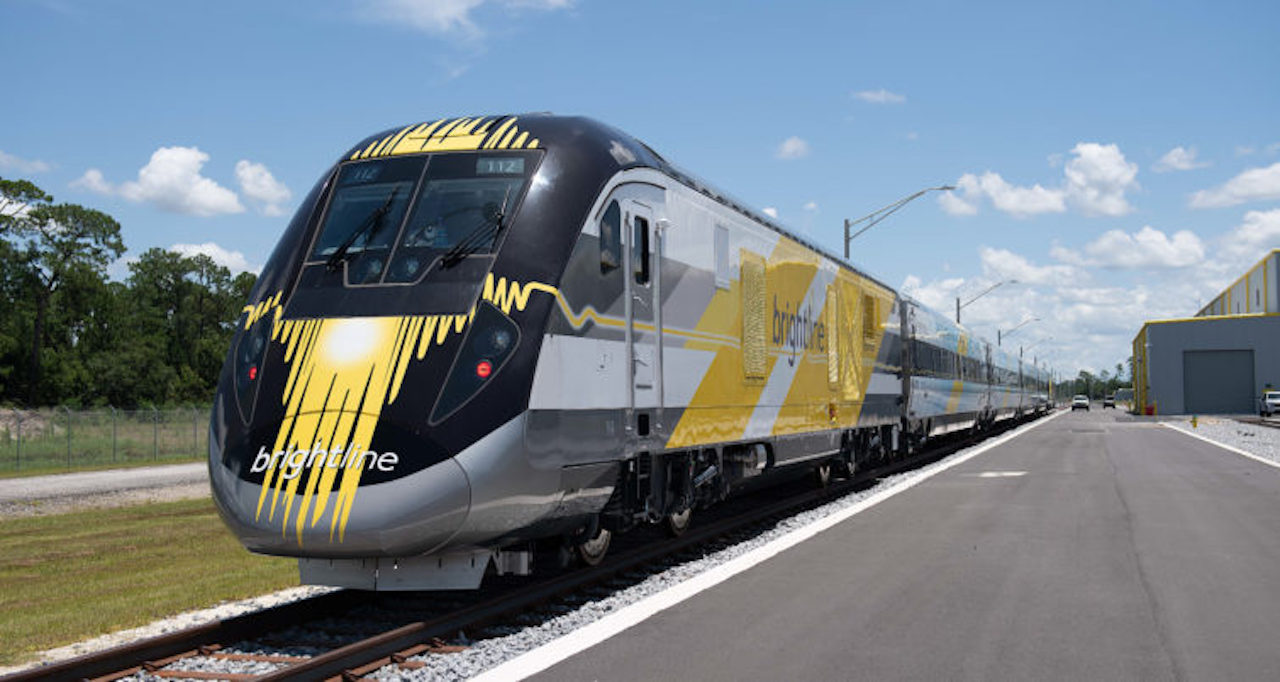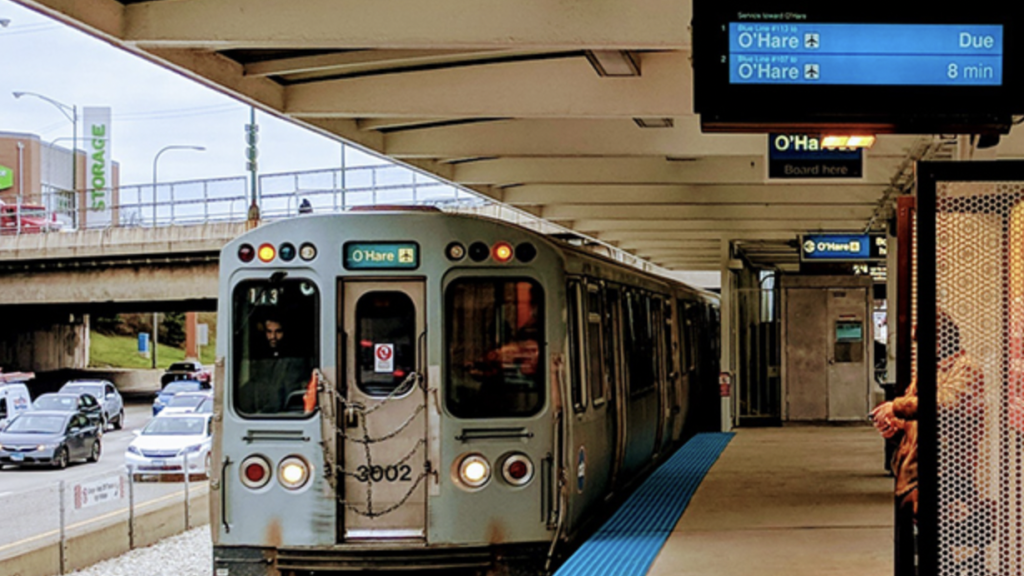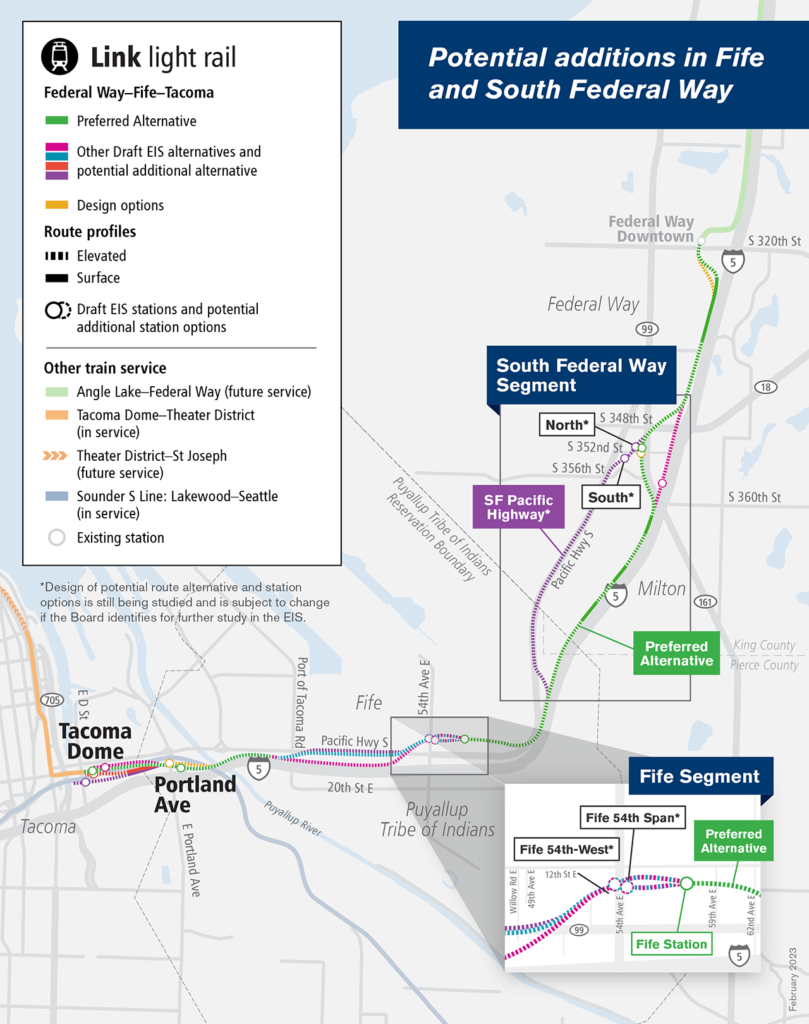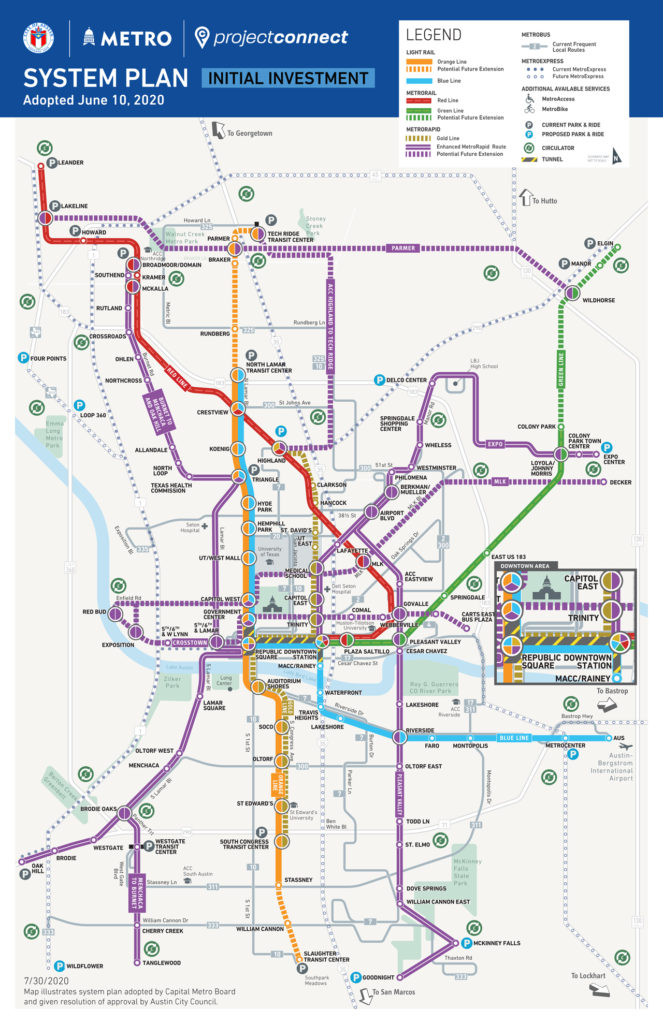
Transit Briefs: Brightline, CTA, Sound Transit, USDOT
Written by Marybeth Luczak, Executive Editor
Brightline train in Orlando. (Photo by David C. Lester)
Ahead of service to Orlando, train testing of up to 125 mph is beginning for Brightline, Florida’s private-sector passenger railroad. Also, Chicago Transit Authority (CTA) is livestreaming the morning rush service conditions on Blue Line O’Hare Branch; Sound Transit’s Link light rail extension from Tacoma to Seattle is delayed again; and the U.S. Department of Transportation (USDOT) establishes a partnership with the city of Austin, Tex., to finance mobility and Infrastructure projects, including the $7.1 billion Project Connect.
Brightline has reported that beginning March 1 it will test trains at a maximum speed of 125 mph between Orlando International Airport and Cocoa. The testing will take place along the new 35-mile dedicated rail corridor that runs parallel to the Beachline Expressway/SR 528 in Orange and Brevard counties. Testing will run between 7 a.m. and 7 p.m. daily throughout the spring, according to Brightline, in preparation for the launch of passenger rail service to Orlando.
Brightline’s testing along the corridor from Cocoa south to West Palm Beach is ongoing, the railroad said, with speeds up to 110 mph.
The extension of Brightline’s 67-mile Miami-to-West Palm Beach line 170 miles north to Orlando is 90% complete, and a second-quarter 2023 opening date is targeted, according to the railroad.
The first trainset was delivered in October 2021; Bright Blue 2 arrived in February 2022; and Bright Pink 2 and Bright Green 2 arrived July 21, 2022. Each comprises four coaches and two Charger diesel-electric locomotives (one at each end). Brightline now has 10 trainsets in its fleet.

CTA on Feb. 28 reported that it has launched a live video feed of the Blue Line on its website, using new, dedicated cameras at six stations from Logan Square to Chicago. It is offered each weekday during the morning rush period, from 7 a.m. until 10 a.m., to provide customers with real-time information on platform crowding conditions so they can decide when is the best time to ride, according to the transit authority.
The new livestream is just one of several steps CTA said it has taken recently to improve service and provide customers with better information on their commute, during one of the busiest times of the day on the Blue Line O’Hare branch—the morning rush period. Since last month, CTA said it has:
- Added extra trains to the Blue Line; deploying them from Jefferson Park when there have been larger gaps between trains. Two extra trains are added each morning.
- Assigned more personnel to closely monitor rush-hour service, which allows staff to respond more quickly to unplanned service issues.
- Made frequent platform announcements to let customers waiting on platforms know real-time system status, the location of next trains, and when extra trains have been deployed.
CTA said that the real-time video feed also builds on its existing ridership dashboards that provide average weekday or weekend ridership trends for every CTA rail station and bus route for each hour of service to help customers plan their trips to avoid crowds.
“Through our Meeting the Moment action plan, we’ve been working to provide more consistent and reliable bus and rail service as well as expand and improve trip planning and communication tools for customers,” CTA President Dorval R. Carter Jr. said. “These new livestreams are part of CTA’s larger efforts to provide tools to help CTA customers plan and manage their commutes.”

The $3.2 billion extension of Link light rail between Tacoma and Federal Way will be delayed by three years, The News Tribune in Tacoma, Wash., reported Feb. 28. Sound Transit, it said, announced the tentative 2035 opening on Feb. 27. The transit agency explained that it would need more station options in Fife “due to flood-plain issues,” and another route in the south Federal Way/Milton area “to avoid adverse effects to cultural resources and construction challenges along the planned route along Interstate 5,” according to the newspaper (see map above). The Sound Transit Board will meet in March to decide whether to approve the changes.
The Tacoma Dome Link Extension is slated to add about 10 miles to Sound Transit’s regional light rail system, via mostly elevated tracks. This project includes four new light rail stations in the South Federal Way, Fife, East Tacoma/Portland Avenue and Tacoma Dome areas. These stations will also provide connections to other regional transit services like the Sounder S Line, Link T Line, ST Express, King County Metro, Pierce Transit, Intercity Transit and Amtrak. According to the newspaper, voters approved the extension in 2016.
Sound Transit in December told The News Tribune “that a draft environmental study once planned for release in 2022 would be delayed,” according to the newspaper. “On Monday [Feb. 27], Sound Transit said it anticipates the draft report’s release in mid-2024 due to the extra time required to study the proposed changes. ‘We’re never happy to delay projects,’ Sound Transit spokesman David Jackson said Monday. ‘But in this case, it’s the smart thing to do.’”

The USDOT on Feb. 28 established an Emerging Projects Agreement with the city of Austin, Tex., that it said would “facilitate innovative delivery and financing of infrastructure improvements” that are part of a $22 billion “network of projects designed to improve travel throughout the region.”
Under the agreement, the Build America Bureau and the city will explore opportunities for innovative project planning, procurement, financing, and delivery that could include using low-interest rate financing such as Transportation Infrastructure Finance and Innovation Act (TIFIA) loans, Railroad Rehabilitation and Improvement Financing (RRIF), Private Activity Bonds (PABs), and technical assistance grants, according to USDOT.
The preliminary list of projects that could benefit from this partnership include:
- Project Connect ($7.1 billion)*: A partnership between the city of Austin, Austin Transit Partnership, and Capital Metropolitan Transit Authority will expand and improve the public transportation network for the entire Central Texas region.
- Corridor Construction Program ($3.6 billion): This program involves the study, planning, design and construction of “transformative safety and mobility improvements” on several significant roadways throughout Austin and Complete Communities infrastructure, according to USDOT.
- Austin Bergstrom International Airport (AUS) Expansion and Development Program ($4 billion).
- I-35 “Cap and Stitch” Program ($963 million): This program involves “new freeway caps and community stitches” along eight miles of the corridor, as well as efforts “to reconnect the community, prioritize equitable transit-oriented development, and address transportation-related environmental justice inequities,” according to USDOT.
- Roadway Extensions, Connections, and Capacity Improvements Program ($250 million): This program will enhance safety, USDOT reported.
The Build America Bureau and Austin officials next month will hold a workshop to engage stakeholders, review infrastructure needs, and help identify potential solutions.
“We are dealing with a large and complicated program of projects that will significantly enhance transportation mobility, resiliency, affordability and safety,” Build America Bureau Executive Director Morteza Farajian said. “To deliver this program effectively and efficiently, we need to form a strong partnership, engage all stakeholders, use innovative approaches and best practices, and take advantage of all tools in our toolbox.”



